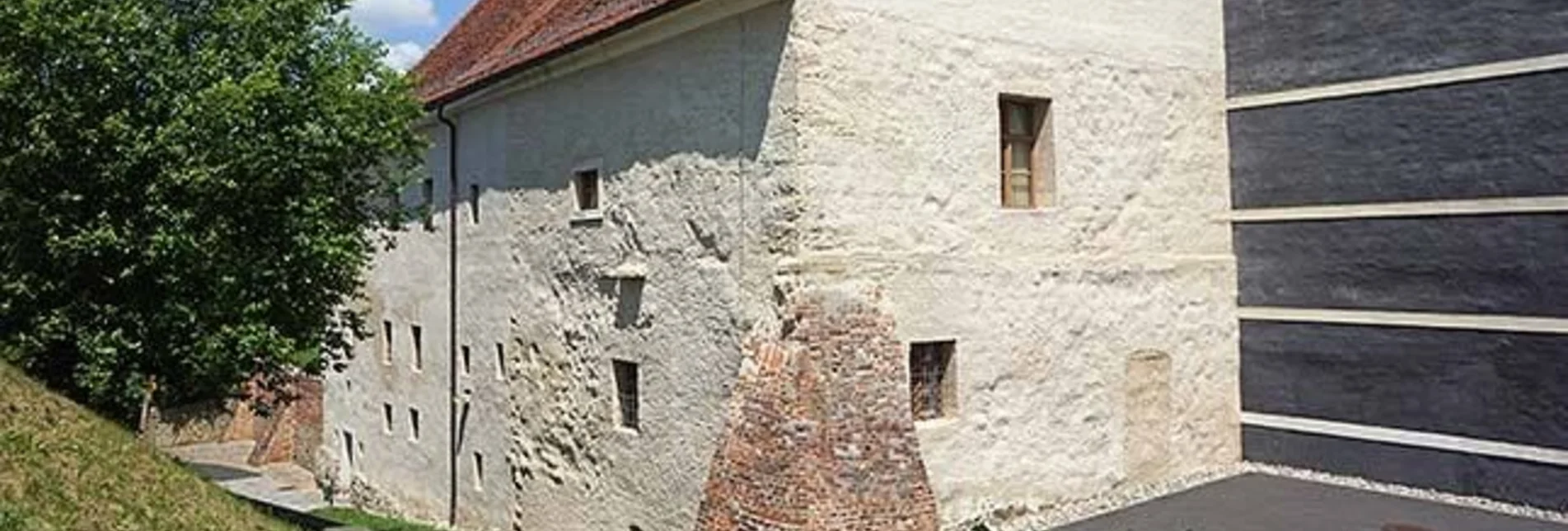

Fürstenfeld Fortress Trail (Fürstenfelder Festungsweg)
Fürstenfeld is the center of the thermal region of Eastern Styria and attracts many visitors as a commercial and shopping town. The opening of the borders to the east moved Eastern Styria and the former border town on the "iron curtain" into the center of Europe. The cityscape of the old border town Fürstenfeld is characterized by imposing remains of the old fortifications. Fürstenfeld was founded around 1170 by Margrave Ottokar IV as a sovereign town to secure the imperial border to the east and as a trading town. The first documented mention dates back to 1178. This first market was protected by walls and towers and nestled up against the castle built high above the Feistritz River and the Knights of St. John command. The Knights of St. John also held the parish rights of Altenmarkt and Übersbach and dominated the region along the Lafnitz border with their presence very early on. In the 16th and 17th centuries, this medieval town fortification was expanded to meet the requirements of the time and supplemented by bastions.
Walkable and informative attractions
The fortifications of the town of Fürstenfeld have been restored in recent years and made accessible by the Fürstenfeld Fortress Trail. The path leads from the museum in the Pfeilburg via the Kavalier to the Ungarbastei, on to the Schlossbastei and from there to the Feistrit shore. It continues up the Feistritz slope and over the old city wall to the main square. From there the path continues to the Mühlbastei and the Grazertor. Via the Augustinerbastei you reach the starting point again, the Pfeilburg. At the same time, the work of the Knights of St. John in the Fürstenfeld area, in Übersbach and in Altenmarkt is shown. The three historically significant church complexes are connected by a bicycle path - the Ritterorden Radl-Tour. This path is also ideally suited for electric bicycles. With the Fortress Trail and the Knights of the Order of Knights Bike Tour, the fortress complex and the work of the Knights of St. John - today the Maltese - can be experienced as walkable and informative attractions.
Characteristics
Best season
The tour in numbers
Map & downloads
More information
With the BusBahnBim app from Verbundlinie, timetable information has never been easier: all bus, train and streetcar connections in Austria can be queried by entering locations and/or addresses, stops or important points. The app is available as a free app for smartphones (Android, iOS) - on Google Play and in the App Store.
The Thermenlandbus also takes you directly to Fürstenfeld on the fastest way.
Gästeinformation Fürstenfeld
Hauptstraße 2a
8280 Fürstenfeld
Tel: +43 3382 55 100-81
fuerstenfeld@thermen-vulkanland.at
www.thermen-vulkanland.at
Learn more about the history of Fürstenfeld and the tobacco factory in the Pfeilburg Museum.





